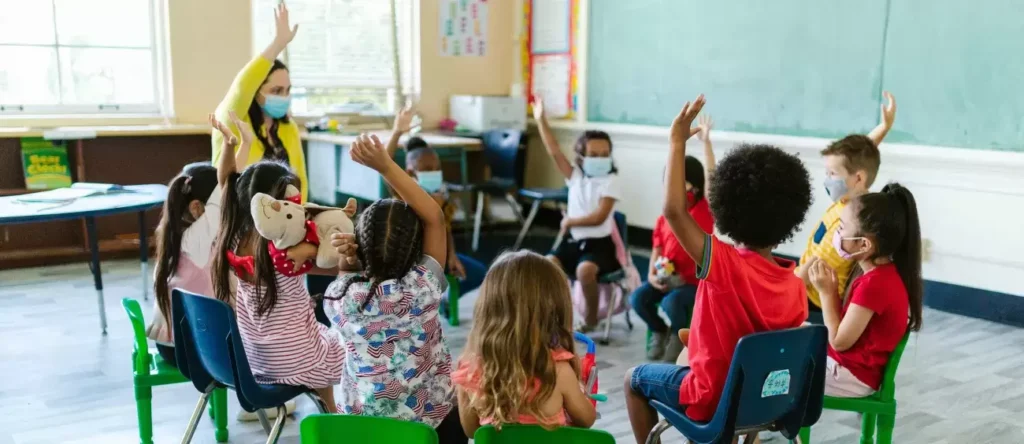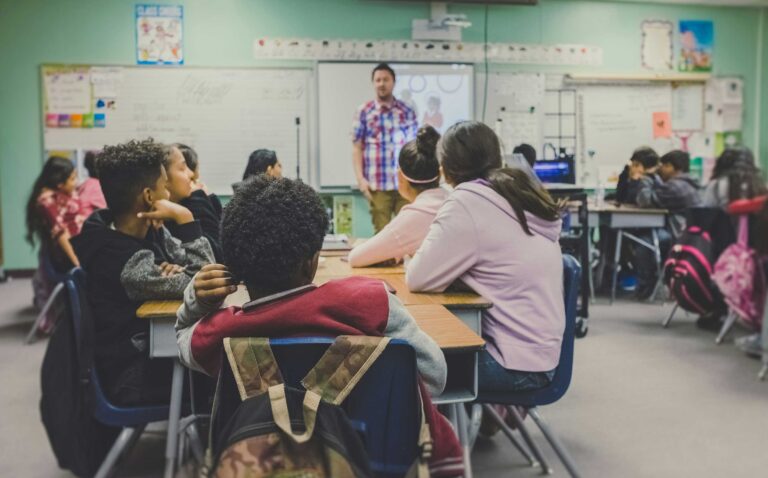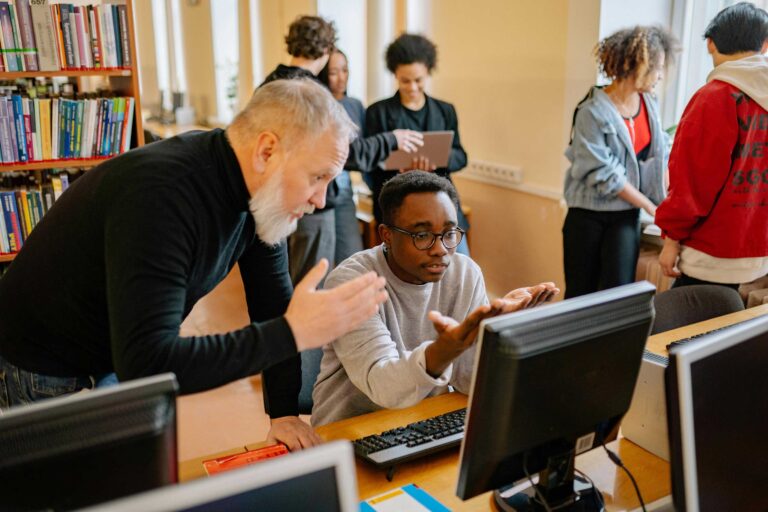Restorative justice has become a popular topic of conversation in schools today. Many schools are adopting restorative justice to create more relationship-centered school cultures. Learn more about how to use restorative justice circles in your classroom:
What is restorative justice?
According to Amplify RJ, restorative justice (RJ) is: “a philosophy and set of practices, rooted in Indigenous teachings, that emphasize our interconnection by repairing relationships when harm occurs while proactively building and maintaining relationships to prevent future harm.”
Restorative justice centers on the dignity of every human being. It holds seven core assumptions about the human condition to be true:
- The true self in everyone is good, wise, and powerful.
- The world is profoundly interconnected.
- All human beings have a deep desire to be in a good relationship.
- All human beings have gifts, and everyone is needed for what they bring.
- Everything we need to make positive change is already here.
- Human beings are holistic.
- We need practices to build habits of living from the core self.
How do I prepare for an RJ circle?
Here are the steps you can take with students to build the foundation for the RJ circles in your classroom:
Name the purpose
To start an RJ circle practice with your students, it is important to share with students what RJ is and why you are doing this. You can talk about how the RJ circle process allows everyone to share their true selves. In circle, everyone is equal.
Create circle agreements
Next, you can create “circle agreements” as a class. These agreements will be the guidelines for how everyone treats each other in the circle. Some common circle agreements include: speak from the heart, listen from the heart, respect the talking piece, and you always have the right to pass. Post these agreements in a place where everyone can see them during your circles.
Choose a talking piece
A talking piece is an item used to show whose turn it is to talk. If someone is holding the talking piece, they may talk, but everyone else in the circle must quietly listen. Some classes may choose to use a soft toy, a stick, a gourd, or another item of significance as a talking piece.
Choose a centerpiece
The centerpiece is placed on the floor in the middle of the circle. It represents what the community values. Some centerpieces may be made up of items from nature, like seashells and stones. Others may include artwork made together by the class.
How do I facilitate an RJ circle?
Once you have prepared the other elements of the circle, you are ready to facilitate. Here is the structure that many RJ circles follow:
Circle agreements
Here, you can remind everyone of the circle agreements you came up with as a class.
Opening quote
Provide an opening quote that matches the theme of your circle. This quote can also be discussed and explored throughout the circle.
Mindfulness exercise
Use a video like this one to help everyone get centered.
Check-in round
Ask something like, “How are you feeling today on a scale from 1-5?” or use these ideas to get a sense of how students are feeling.
Question rounds
The circle facilitator will choose questions to ask everyone based on the theme of the circle. Each person in the circle will have the chance to answer the questions one at a time. The person holding the talking piece speaks, while everyone else quietly listens. They may also say “pass” if they would not like to answer. They then give the talking piece to the person next to them so they can answer, and so on.
Check-out round
You can use the same method you used during the check-in round. Use this round to see if any students shared that their mood went up or down after the circle. If any of them say their moods went down, check in with those students later. See if there was anything that was said that was harmful to them and work together to determine how the student would like that to be addressed.
Closing quote
End the circle with another quote that relates to the theme, usually with a hopeful or inspiring message.
How do I make RJ circles accessible for all students?
Some students may need accommodations to fully participate in the circle process. Sitting for long periods of time and refraining from interrupting can be especially challenging for neurodivergent students. Some ways to support these students are:
Normalizing movement
When reviewing your class’ circle agreements, remind students that it is OK to stand up and stretch by your chair if you need to. Work together as a class to come up with ways to do this that are not distracting. You can normalize movement as the adult facilitator by modeling this during the circle if you need a moment to stretch.
Providing fidgets
Fidgets can help students to better focus on the conversation. Some examples of fidgets are: a stress ball, rubix cube, or tangle. It is ideal to choose fidgets that can be used quietly so they do not disrupt or distract the other people in the circle.
Playing a game
Sometimes, mixing it up can provide more opportunities for engagement if students are struggling to sit and focus for long periods of time. You can begin the circle in the typical way by sharing class agreements, an opening quote, and meditation. You can also do a check-in round if you’d like. Then, spend the rest of the time playing a game together as a class. If you are outside, students could play soccer, kickball, run relay races, etc. If students are inside, you could play games like “Zip, Zap, Zop”, Change Places If You…, Night at the Museum, etc.
How do I avoid causing harm during RJ circles?
While RJ circles are a helpful tool for building classroom community and culture, they can also be harmful if not done mindfully. Here are some things you can do to avoid causing harm during the RJ circle process:
Avoid forcing students to speak
Teachers often want to ensure that students are accountable for their learning. In circle, learning can happen quietly. This can be different from a classroom environment, where all students are required to answer questions whether out loud or in writing. Allow students to “pass” when they need or want to. Do not force them to talk about a topic that may be uncomfortable for them. This could be psychologically damaging depending on the question. It may also make them less likely to want to engage in the circle process.
Avoid asking students to disclose things they might not want to talk about, particularly trauma
While sharing can be cathartic, you can remind students that they don’t have to share anything they don’t want to. You can also remind students that it is important not to repeat what people share outside of the circle. This creates a safe and empowering space for sharing. Finally, in case a student does share something difficult and needs support afterward, come up with a plan ahead of time that ensures the student gets the care and resources they need after the circle.
Avoid appropriating Indigenous cultures
RJ is a practice that is rooted in Indigenous teaching and philosophy. There is a difference between honoring that tradition and appropriating or mocking that tradition. If you are not an Indigenous teacher, avoid doing things like wearing an Indigenous headdress or face paint during circle. Some teachers may think this helps “set the mood” but it is actually racist and can be harmful to BIPOC students in the room, especially Indigenous students.
Take a mental health test
 If you or a friend are struggling with your mental health, take an anonymous, free, and private mental health test. It only takes a few minutes, and after you are finished, you will be given information about the next steps you can take based on the results.
If you or a friend are struggling with your mental health, take an anonymous, free, and private mental health test. It only takes a few minutes, and after you are finished, you will be given information about the next steps you can take based on the results.
If you or someone you know is struggling or in crisis, help is available. Call or text 988 or chat 988lifeline.org. You can also reach Crisis Text Line by texting HOME to 741741.


